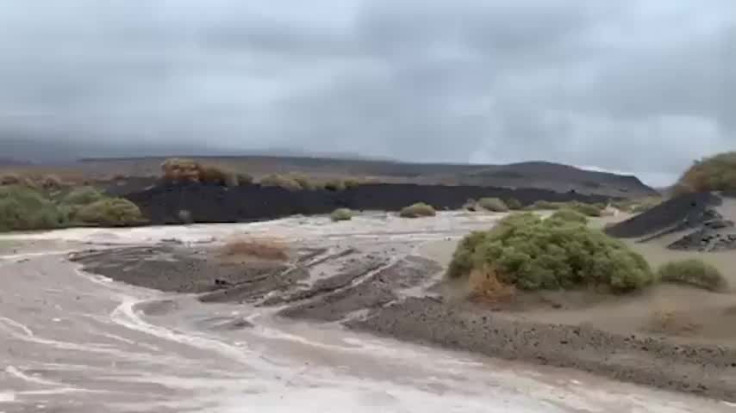Death Valley Flooding: NASA Satellite Images Show Before And After Storm
KEY POINTS
- NASA released images showing drastic water accumulation in Death Valley, California
- The park received 75% of its annual rainfall in three hours during the Aug. 5 flash floods
- NASA images show before and after changes between July 11 to Aug. 7, 2022
Flash floods at Death Valley National Park last week left about 1,000 people stranded, washed debris over roads, and buried cars. New images shared by NASA late Tuesday showed the before and after of the calamity.
A complete shutdown of all roads into the park was ordered by authorities to control the situation as the area received 75% of its annual rainfall (1.46 inches) in just three hours Friday.
Park officials said the Furnace Creek area of the park, near the Nevada-California state line, had received "nearly an entire year's worth of rain in one morning." Satellite images taken between July 11 and August 7 highlighted the drastic aftereffects of the flooding.
The images show a huge amount of water presence in and around the park, which is one of the driest places on Earth, according to NASA. The aftereffects of the flood, which is being called a "thousand-year rain event," were captured by Lauren Dauphin. The "false-color images" were acquired by the Moderate Resolution Imaging Spectroradiometer (MODIS) on NASA's Terra and Aqua satellites.
In the images, flood water is marked in dark blue; saturated soil is highlighted in light blue; bright green marks vegetation and brown colors signify bare ground.
Meanwhile, park officials confirmed there were 60 vehicles buried by the gushing waters as a water facility was knocked down. No injuries were reported.
This is the second major flooding event at the park within a week, The Guardian reported.
Roads remained closed on Aug. 6 after being piled with mud and debris from the floods that also gravely affected western Nevada and northern Arizona. Photographer John Sirlin, who was able to document the flooding, said it was "more extreme than anything I've ever seen," during a phone interview with the Associated Press.
"I've never seen it to the point where entire trees and boulders were washing down. The noise from some of the rocks coming down the mountain was just incredible," he said, adding, "A lot of washes were flowing several feet deep. There are rocks probably 3 or 4 feet covering the road."
Sirlin also added that he hadn't observed any injured visitors or "any high water rescues" even though there were "at least two dozen cars that got smashed and stuck in there."
DEATH VALLEY FLOODING: New NASA satellite images show a huge amount of water in Death Valley #8NN https://t.co/IWT51Earea pic.twitter.com/qAHT7L147I
— 8 News Now (@8NewsNow) August 10, 2022
A statement from park officials said that "flood waters pushed dumpster containers into parked cars, which caused cars to collide into one another. Additionally, many facilities are flooded including hotel rooms and business offices."
Major flash flooding in Death Valley National Park this morning. Approximately two dozen vehicles trapped in mud and rock debris at the Inn at Death Valley. Took nearly 6 hours to get out. #cawx #stormhour pic.twitter.com/3rDFUgY7ws
— John Sirlin (@SirlinJohn) August 5, 2022
Park officials reported water damage to park staff residences, extensive flooding and damage to various roadways, blown-out residential water lines, multiple uprooted palm trees and washouts as they continued assessing the situation.
"I want to thank park staff, the California Department of Transportation, and other partners who are working hard to reopen major roads for travel and manage this incident," park superintendent Mike Reynolds said in the statement. "With the severity and wide-spread nature of this rainfall it will take time to rebuild and reopen everything, and we appreciate your support and patience as we continue this work."

© Copyright IBTimes 2025. All rights reserved.






















